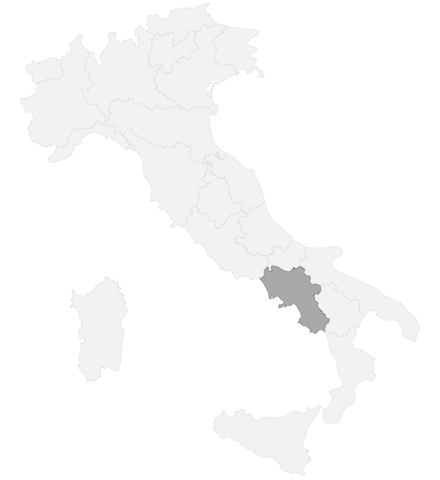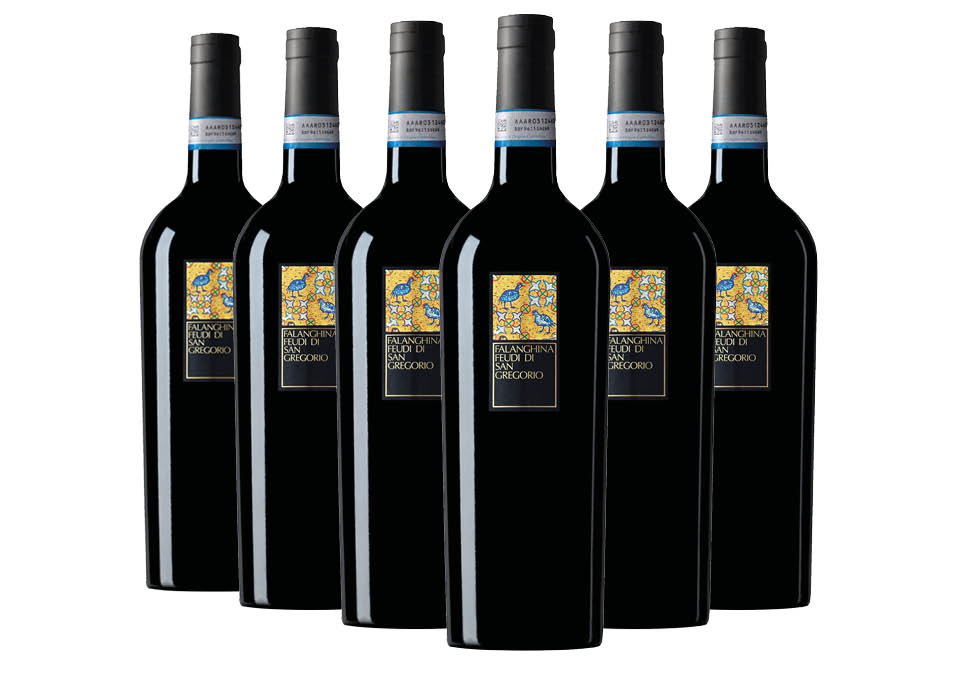Campania
 Campania wine has an ancient winemaking tradition, one of the first territories in the world to have seen the settlement, cultivation, study of the vine and the production of wine. The spread of the vine, in fact, dates back to pre-Roman times, thanks above all to a particularly favorable climate and the particular nature of the soil, and in Roman times one of the most valuable wines was Falerno.
Campania wine has an ancient winemaking tradition, one of the first territories in the world to have seen the settlement, cultivation, study of the vine and the production of wine. The spread of the vine, in fact, dates back to pre-Roman times, thanks above all to a particularly favorable climate and the particular nature of the soil, and in Roman times one of the most valuable wines was Falerno.
This region has a rich heritage of high quality grapes, which give life to a wide variety of wines, both white and red, including many excellences, well known and appreciated not only in Italy, but also abroad, with a total of 4 DOCG wines, 15 DOC wines and 10 IGT wines divided into 5 macrozones: the Casertano, the Naples area and the splendid islands of Capri and Ischia, Irpinia, Benevento. Everywhere in the region the composition of the land is linked to the eruptions of Vesuvius, whose volcanic activity has dispersed considerable quantities of ashes even over long distances, enriching the earth with mineral components.
Red wine from Campania
The most common red wine from Campania is Aglianico, which is joined by Piedirosso (called Per'e Palummo, that is Piede di Colombo), Sciascinoso, Pallagrello nero and Casavecchia, the latter forgotten for years and recently rediscovered with excellent results and extremely elegant and richly colored wines. The two DOCG red wines from Campania, Taurasi and Aglianico del Taburno both see the Aglianico grape as protagonist. The Taurasi, which ages for at least three years in cask, is very structured and suitable for long aging, such that its longevity can be compared to that of the great Italian reds such as Brunello or Barolo. Aglianico is also part of the grapes of the Campi Flegrei appellation, where Per 'e Palummo (dove's foot) is also widespread, which owes its name to the gnarled red bases of the vine stocks, similar to the red feet of a dove and gives juicy, intense and pleasantly fruity wines. Both of these grapes are also widespread in the Costa d'Amalfi appellation and in the Falerno del Massico DOC and Irpinia DOC appellations. Not to forget other minor red grapes such as Casavecchia, black Pallagrello and Sciascinoso.
White wine from Campania
The oldest white wine from Campania is Falerno del Massico, which was produced from the Aminea Gemina grape, now known as Greco, and was known and appreciated throughout ancient Rome. Today the Greco remains one of the most important grapes of Campania and gives life, among others, to a white DOCG perfect for fish dishes and fresh cheeses. The other great white from Campania is Fiano di Avellino, protagonist in the DOCG wine of the same name, which is characterized by flavor and freshness and was one of the favorite wines of Frederick II of Swabia. Less prestigious but highly appreciated throughout Italy is Falanghina, very interesting in the Campi Flegrei area and which also gives excellent results as a Metodo Classico sparkling wine and whose name derives from the "phalanx" the poles that, since ancient times, were used to support the screws. Other minor grapes are Coda di Volpe, which is part of the legendary Lacryma Christi appellation, Palagrello and Asprinio. Finally, do not forget the whites born and raised on the island of Ischia such as Forastera and Biancolella di Ischia which are born from heroic viticulture, from vineyards clinging to the earth and overlooking some of the most beautiful landscapes in the world.
How many Campania DOCG wines are there?
There are four Campania DOCG wines in all, two whites and two reds.
Which are the main producers of fine wines from Campania?
There are many producers of fine wines from Campania, among the most famous we certainly find Feudi di San Gregorio, Mastroberardino, Marisa Cuomo and Quintodecimo.
Why do we talk about volcanic wines in Campania?
The volcanic wines in Campania are born on the slopes of Vesuvius and are enriched with very pleasant mineral notes: an excellent example is the Falanghina dei Campi Flegrei.


















